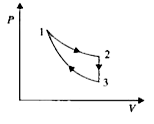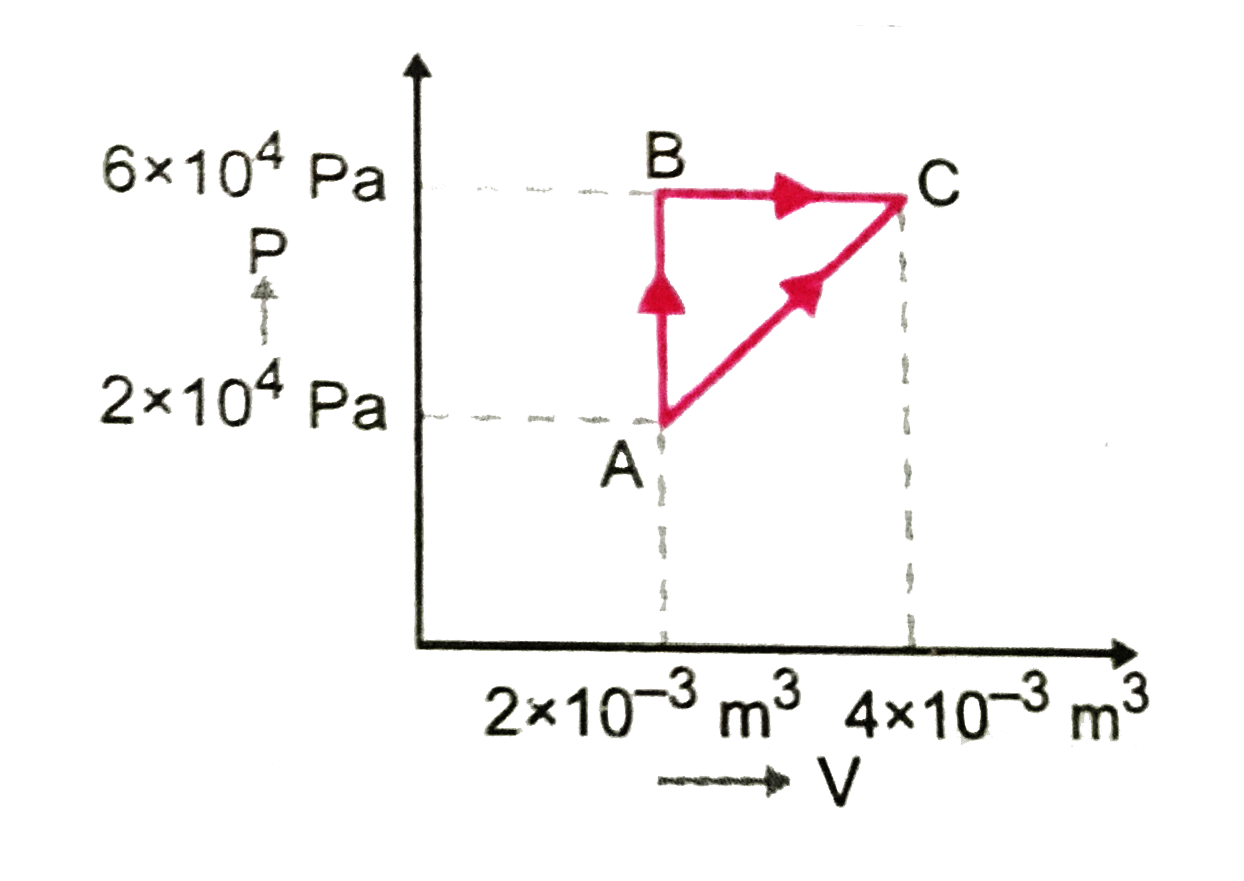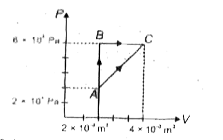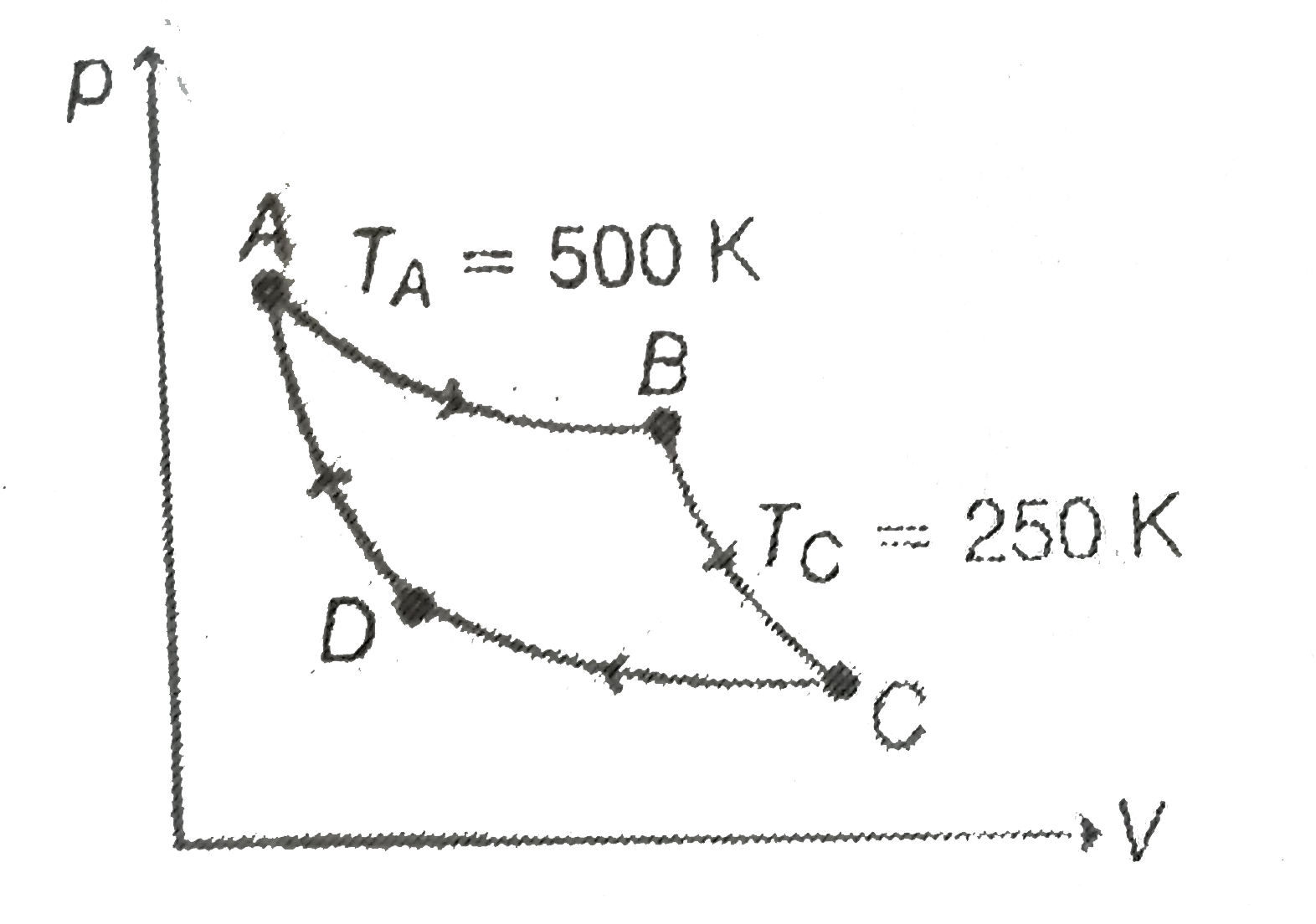In a certain process, of work is done on a system which gives off of heat. What is for the process?
To solve the problem, we will use the first law of thermodynamics, which states:
ΔU=Q+W
Where:
- ΔU is the change in internal energy of the system.
- Q is the heat exchanged (positive if absorbed, negative if released).
- W is the work done (positive if done on the system, negative if done by the system).
1. Identify the values given in the problem:
- Work done on the system: W=400J
- Heat given off by the system: Q=−200J (since the system releases heat, we take it as negative).
2. Substitute the values into the first law of thermodynamics equation:
ΔU=Q+W
3. Plug in the values for Q and W:
ΔU=(−200J)+(400J)
4. Perform the calculation:
ΔU=−200+400=200J
5. Conclusion:
The change in internal energy ΔU for the process is 200J.
Final Answer:
ΔU=200J
---
- ΔU is the change in internal energy of the system.
- Q is the heat exchanged (positive if absorbed, negative if released).
- W is the work done (positive if done on the system, negative if done by the system).
- Work done on the system: W=400J
- Heat given off by the system: Q=−200J (since the system releases heat, we take it as negative).
ΔU=Q+W
ΔU=(−200J)+(400J)
ΔU=−200+400=200J
The change in internal energy ΔU for the process is 200J.
ΔU=200J
Topper's Solved these Questions
- THERMODYNAMICSBOOK - CENGAGE CHEMISTRY ENGLISHCHAPTER - THERMODYNAMICSEXERCISE - Ex 6.2
27 Videos
- THERMODYNAMICSBOOK - CENGAGE CHEMISTRY ENGLISHCHAPTER - THERMODYNAMICSEXERCISE - Ex 6.3
27 Videos
- THERMODYNAMICSBOOK - CENGAGE CHEMISTRY ENGLISHCHAPTER - THERMODYNAMICSEXERCISE - Exercise
1 Videos
- STOICHIOMETRYBOOK - CENGAGE CHEMISTRY ENGLISHCHAPTER - STOICHIOMETRYEXERCISE - Archives Subjective
33 Videos
Similar Questions
Knowledge Check
In the P-V diagram (Fig 15.14.1) given below, three thermodynamic processes occur for an ideal gas. Processes 1→2,2→3and3→1 are isothermal, isochoric and adiabatic processes respectively. The total amt of work done is 10 J. During the process 3→1, 20 J of work is done on the system. The amount of heat added to the system during the process 1→2 is
 A30 JB20 JC10 JD0 J
A30 JB20 JC10 JD0 J
During a process work equivalent to 400J is done on a system, which gives out of 125J of energy. The change in internal energy is
View SolutionIn a certain process, 400 cal of heat are supplied to a system and the same time 105 J of mechanical work done on the system . The increase in its internal energy is
View SolutionIn (figure). shows two path that may be taken by a gas to go from a state A to state C

In the process AB, 400J of heat is added to the system and in process Bc, 100J of heat is added to the system. The heat absorbed by the system in the process AC will be
View SolutionA thermodynamic process is shown in the following figure. The process and volumes corresponding to some points in the figure are:
PA=3×103Pa,
VA=2×10−3m−3,
PB=3×104Pa,VD=2×10−3m3
In process AB,600J of heat is added to the system and in the process BC,200J of heat is added to the system. the change in internla energy of the system in the process AC would be

View SolutionFigure below shows two paths that may be taken by a gas to go from a state A to a state C . In process AB , 400 J of heat is added to the system and in process BC , 100 J of heat is added to the system . The heat absorbed by the system in the process AC will be

View SolutionIn a process, 701J of heat is absorbed by a system and 394J of work is done by the system. What is the change in internal energy for the process?
View SolutionA monoatomic ideal is used as the working substance for the carnot cycle shown in the figure. Processes AB and CD are isothermal, while processes BC and DA are adiabatic. During process AB, 400 J of work is done by the gasd on the surroundings. How much heat is expelled by the gas during process CD?

View Solution
